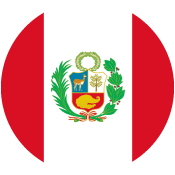The counterparty is any natural or legal person with whom the company has commercial, business, contractual or legal ties of any kind. Among others, counterparties are the company’s associates, employees, clients, contractors and product suppliers.
It is important to know who your counterpart is; You can do this by requesting documents to validate your basic, financial and technical information. In addition, you can find out who are its legal representatives, shareholders and final beneficiaries.
You can complement the knowledge obtained from the requested documents by also making a field visit to their facilities or business establishment.
What is a final or beneficial owner?
Beneficial ownership is the natural person(s) who ultimately owns or controls a customer or the natural person on whose behalf a transaction is made. It also includes the person(s) who exercise effective and/or final control, directly or indirectly , over a legal entity or other structure without legal personality.
Key aspects to take into account
A) Identify the final beneficiary of your counterparty, take the appropriate measures to verify their identity.
B) Carry out due diligence with the information obtained in the requested documentation, validation of restrictive lists for each of the members that make up the company.
C) High and medium risk countries: Validate whether the third party, the bank account, the payment recipient or their bank account are located in high or medium risk jurisdictions.
D) Have mechanisms that allow consolidating and identifying present or future alerts, having a date of the counterparty’s knowledge or monitoring process.
E) Exercise special control to keep the information and documentation updated, in the event that a counterparty does not update the information, this fact must be analyzed as a “warning signal”.
Some warning signs
A) Counterparts that carry out operations in quantities or values not in accordance with their economic activity.
B) Counterparts that offer products or services with prices below normal market costs.
C) Counterparts that present inconsistencies in the related information vs. the documented information.
D) Partners, shareholders, representatives who have ML/FT/FPADM judicial records .
How does technology help companies understand their counterparts?
In the market you can find platforms such as Suplos in which you can register all third parties, creditors, contractors with whom you have or may have a commercial relationship, obtain their basic, technical and financial information and documentation, and update it annually. , validate its representatives, shareholders, final beneficiary in restrictive lists, maintain control of the alerts generated. Among the lists that are validated are: national, international, FIFO, news, among others.
Sources:
External Circular 100-00004 Superintendency of Companies
External circular 100-000016 Superintendence of companies




